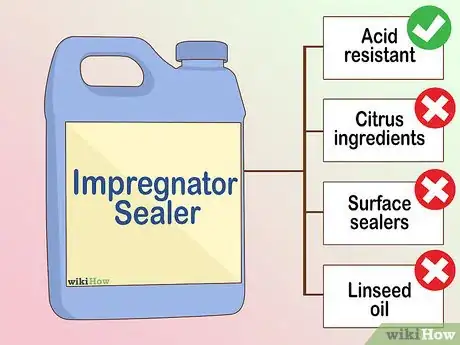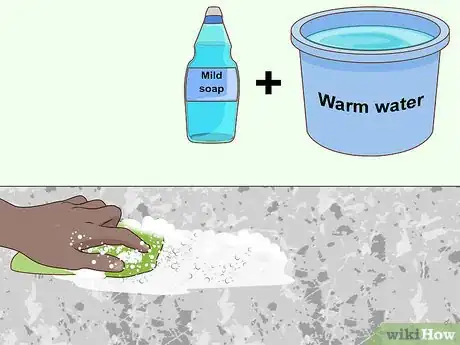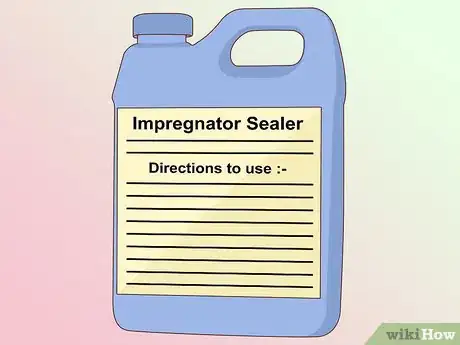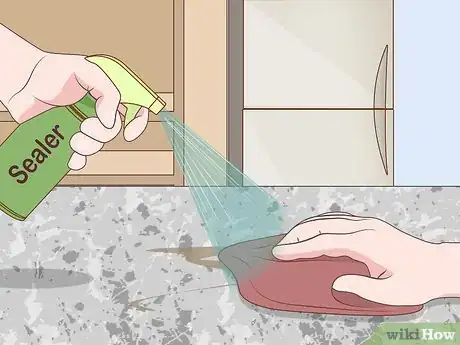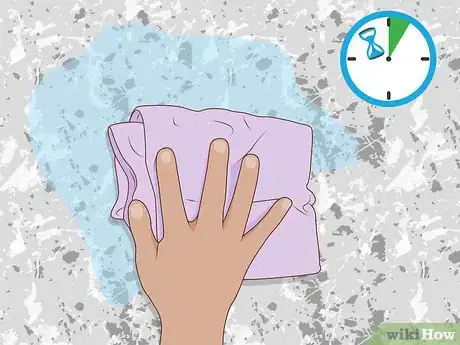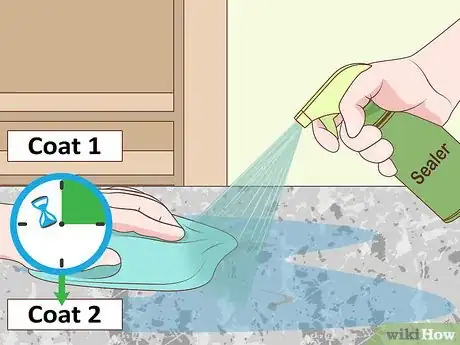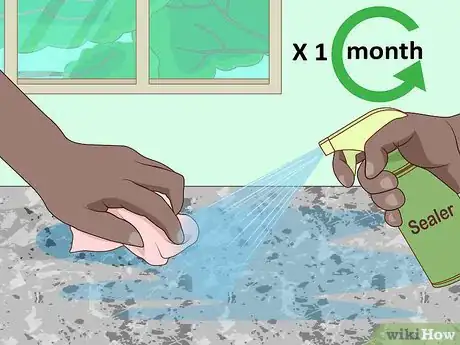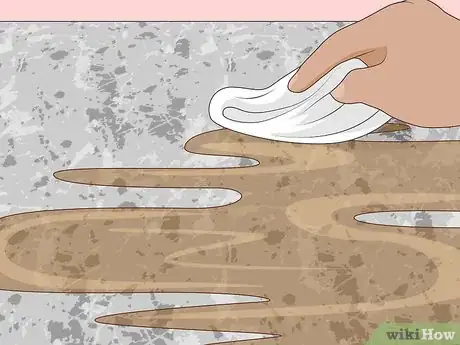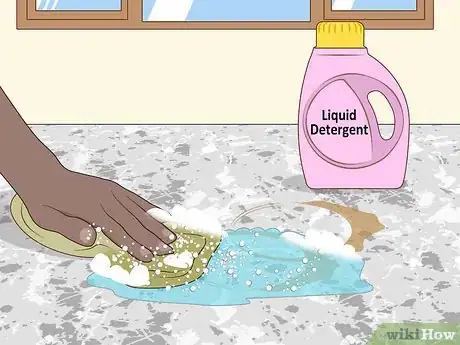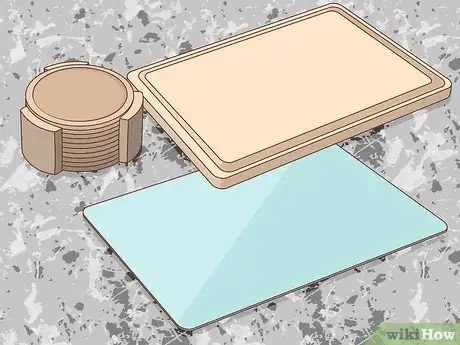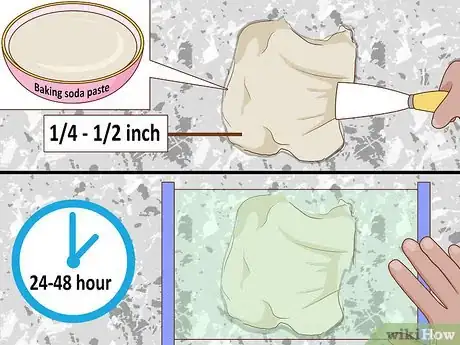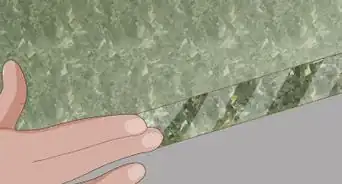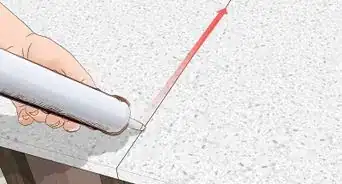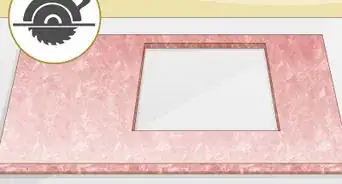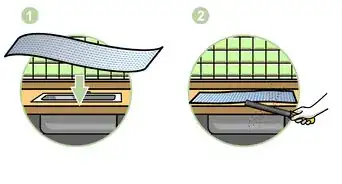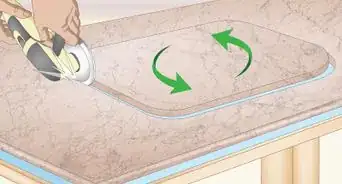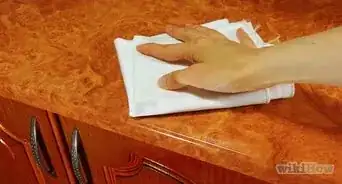This article was co-authored by Mitchell Newman. Mitchell Newman is the Principal at Habitar Design and its sister company Stratagem Construction in Chicago, Illinois. He has 20 years of experience in construction, interior design and real estate development.
wikiHow marks an article as reader-approved once it receives enough positive feedback. In this case, 97% of readers who voted found the article helpful, earning it our reader-approved status.
This article has been viewed 230,572 times.
Marble countertops can elevate the overall feel of your kitchen by adding a sense of class and beauty. However, it’s easy to permanently damage marble, and tricky to it keep looking good if you aren’t sure how to protect it. To protect your marble countertop, choose and test a sealer, apply your chosen sealer, and keep the countertop clean.
Steps
Choosing and Testing a Sealer
-
1Buy an acid-resistant impregnator sealer. There are many different counter sealers out there to choose from. However, depending on the ingredients, some will be effective and others may cause damage. Read the label carefully and make sure to go with a sealer that is an acid-resistant impregnator. Stay away from the following:
- Citrus ingredients
- Surface sealers
- Linseed oil
-
2Test the marble with water or mineral oil. Sealing your countertop is probably the best way to protect it, but before sealing it, you should make sure it needs to be sealed. Put a few drops of mineral oil or water on your counter and leave it for a few minutes (4 minutes for the water and 10 for the mineral oil). Wipe up the liquid. If a dark spot or stain is left behind, then it’s time to seal your countertop.
- Don’t worry about the water or mineral oil leaving a spot behind; the liquid should evaporate within a half hour.
Advertisement -
3Clean the countertop with soap and water. Once you’ve determined that your countertop needs to be sealed, give it a good cleaning. Clean the countertop using a clean, soft cloth, a mild soap, and warm water. Afterwards, dry the area thoroughly with a clean, dry cloth.[1]
- Don’t clean your countertop with any harsh or acidic chemicals or products, such as bleach or lemon juice.
-
4Read the instructions on the sealer’s label. Before applying the sealer, it’s important to read and understand the manufacturer’s directions on how to do so. Different manufacturers require using different application techniques and amounts of sealer, depending on the type of stone as well as the type of finish.
Applying the Sealer
-
1Apply the sealer by spraying and rubbing it in. Begin following the sealer’s directions. Typically, the sealer label will instruct you to spray the entirety of your countertop with the sealer and then rub it in with a clean, soft cloth.
- If you’ve never sealed you countertop before with the product you’re using, consider treating a small area and checking it 24 hours later to make sure it had a positive effect on your countertop.
- If your countertop has a large surface area, you may want to treat small sections one at a time.
-
2Wait 5 minutes and remove any excess sealer. Unless otherwise instructed, let the sealer soak in for about 5 minutes and then get a clean microfiber cloth to use to wipe up any excess.
- If you happened to apply the perfect amount of sealer, then there may not be any left for you to remove. If this is the case, do a quick counter wipe with the microfiber cloth anyway.
-
3Apply a second coat after 15 minutes. It’s common and often beneficial to do more than one coat when applying sealer, mostly because multiple coats ensure full coverage. Make sure to wait at least 15 minutes so that the first coat can completely soak in, and then apply additional coats as needed and/or specified in your sealer’s directions.
-
4Seal your countertop once a month. In order to provide the best possible protection for your countertop, you’ll need to repeat this process about once a month. Your marble countertop can stain easily and quickly, but with a strong sealer always on it, you’ll have a little more time to clean up any spills and prevent staining or etching.[2]
Keeping the Countertop Clean
-
1Wipe up spills immediately. If you want to keep your marble countertop in pristine condition, it’s vital that you wipe up any spills as soon as they happen. Marble is especially sensitive to acidic substances such as coffee, soda, fruit juices, and many common cleaning products. As soon as a liquid comes in contact with your counter, wipe it up with a paper towel, sponge, or soft cloth.[3]
- Keep a hand towel nearby to ensure quick clean up.
-
2Remove stains right away. If you wipe up a spill and it has already created a stain, remove the stain right then and there. Different kinds of stains require different removal techniques. Make sure you remove the stain quickly and properly.
- Remove an oil-based stain with a soft liquid cleanser, liquid detergent, ammonia, or mineral spirits.
- Remove an organic stain with a mixture of 12% hydrogen peroxide and a few drops of ammonia.
- Remove water stains with dry steel wool.[4]
-
3Use cutting boards, coasters, placemats, and trivets. All of these items create a barrier between your countertop and potentially damaging substances. This will prevent etches, scratches, and burn marks from permanently scarring your marble countertop.[5]
-
4Apply a poultice to your countertop. If your marble countertop is looking especially dirty, dull, or stained, it might be best to apply a paste-like cleaning agent, such as baking soda, to your entire countertop. Mix the paste and slather it onto the counter evenly with a spatula so that it’s ¼ to ½ inch (0.64-1.27cm) thick. Cover it with plastic wrap and tape down the edges with painter’s tape. Remove the plastic after 24-48 hours, let the paste dry out, and then remove it with a wooden or plastic scraper.[6]
Expert Q&A
-
QuestionHow do you keep marble from staining?
 Mitchell NewmanMitchell Newman is the Principal at Habitar Design and its sister company Stratagem Construction in Chicago, Illinois. He has 20 years of experience in construction, interior design and real estate development.
Mitchell NewmanMitchell Newman is the Principal at Habitar Design and its sister company Stratagem Construction in Chicago, Illinois. He has 20 years of experience in construction, interior design and real estate development.
Construction Professional Marble will stain even if you apply a sealer. Marble countertops need to be sealed, which will slow down water penetration and other stains. Even with sealing, though, marble countertops stain easily. Over time, it's going to have a worn-in patina, but if you're going for an old farmhouse look or something similar, that might fit perfectly with what you want.
Marble will stain even if you apply a sealer. Marble countertops need to be sealed, which will slow down water penetration and other stains. Even with sealing, though, marble countertops stain easily. Over time, it's going to have a worn-in patina, but if you're going for an old farmhouse look or something similar, that might fit perfectly with what you want.
Things You'll Need
- Warm water
- Mild soap
- Clean, soft cloths
- Mineral oil
- Impregnating sealer
- Cutting boards
- Coasters
- Placemats
- Trivets
- Steel wool
- Ammonia
- Hydrogen Peroxide
- Baking soda
- Wooden or plastic spatula
- Plastic wrap
- Wooden or plastic scraper
References
- ↑ https://www.youtube.com/watch?v=g3NiBbKV_4k
- ↑ https://www.houzz.com/ideabooks/50954561/list/how-to-clean-marble-countertops-and-tile
- ↑ http://www.countertopspecialty.com/marble-cleaning.html
- ↑ https://www.houzz.com/ideabooks/50954561/list/how-to-clean-marble-countertops-and-tile
- ↑ http://www.countertopspecialty.com/marble-cleaning.html
- ↑ https://www.houzz.com/ideabooks/50954561/list/how-to-clean-marble-countertops-and-tile
About This Article
Since marble can be permanently damaged, you should protect your countertop with a sealer. Look for an acid-resistant impregnator sealer in your local home improvement store. Before you apply your sealer, you’ll need to clean the countertop with a soft cloth and warm soapy water. Then, spray the sealer onto your countertop and rub it in with a clean cloth. Leave it to soak for 5 minutes and remove any excess sealer with a new cloth. After 15 minutes, apply a second coat to make sure you cover the whole surface. You’ll need to repeat the process about once a month to keep your countertop protected from stains or scratches. For more tips from our Home Improvement co-author, including how to keep your marble countertop clean, read on!
